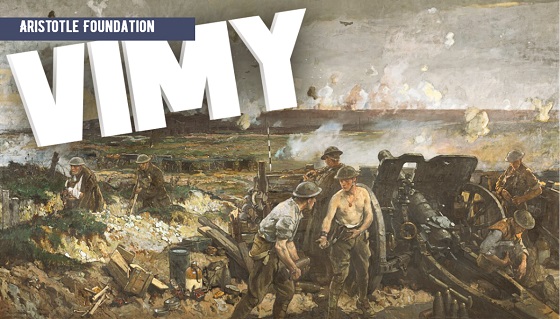Opinion
Premier Scientific Journal Nature Takes on ‘Climate of Fear’ Surrounding Research on Sex and Genr

From Heartland Daily News
“These articles are using phrases like ‘a person’s sex assigned at birth’. I find that phrase amusing. I don’t think sex is assigned at birth. Biological sex is a fact. It’s not assigned. It’s observed.”
Nature, one of the world’s premier scientific journals, has acknowledged the importance of studying sex and gender differences and officially denounced the “climate of fear and reticence” that is stymying research on the topic.
To that end, the journal in May launched “a collection of opinion articles” on the topic to be published over the coming months to foster honest and courageous discussions on a topic that many scientists shy away from due to fears of professional and personal repercussions.
“Some scientists have been warned off studying sex differences by colleagues. Others, who are already working on sex or gender-related topics, are hesitant to publish their views,” read the editorial introducing the series.
“…In time, we hope this collection will help to shape research, and provide a reference point for moderating often-intemperate debates.”
Headlines that kicked off the series include “Neglecting sex and gender in research is a public-health risk,” “Male–female comparisons are powerful in biomedical research” and “Heed lessons from past studies involving transgender people: first, do no harm.”
What the collection of articles represents and whether it will ease tensions surrounding this area of research remains to be seen.
Jeffrey Mogil, a neuroscientist and pain researcher at Mcgill University, as well as the co-author of one of the articles in Nature’s sex and gender series, told The College Fix there is an effort underway in biological research to do away with or minimize the importance of the concept of sex and sex as a binary variable.
This is problematic, Mogil said in a recent telephone interview, because sex in mammals is “either binary or it rounds to binary and in doing so it always has been useful and continues to be and any conception of it that isn’t binary would then impose practical difficulties on how science is done.”
Moreover, he noted, discarding the notion of binary sex in mammals would set back important advancements in how many biomedical researchers now do their work.
“There are sex differences in all kinds of traits that we’re interested in and where we didn’t know they existed,” Mogil said. “The reason we didn’t know they existed [is] because until extremely recently, essentially all biology pre-clinical experiments were done with males only.”
“Since regulatory agencies, funding agencies, have demanded that people start using both sexes [in research],” he said, “lo and behold, we’re finding sex differences.”
“We’re finding that what we thought was the biology of a thing was only the biology of the thing in males and the female biology is completely different,” he added.
“This is in our minds,” he said, “an incredible scientific advance and that advance is at risk of stopping and reverting if, you know, people start to believe…dividing animals into males and females is inappropriate.”
Although Mogil stated he did not know how Nature made editorial decisions regarding the selection of articles for their sex and gender collection, he said that he felt the article he and his co-authors wrote was intended to defend the status quo against those “advocating…either that gender is much more important than sex or that sex is more complicated than people have made it seem.”
The College Fix reached out to a senior communications manager from Springer Nature in early June regarding the selection process for the series, as well as how sex was presented in some of the other commentaries, but did not receive a response.
Daniel Barbash, a professor of molecular biology and genetics at Cornell University, was more skeptical than Mogil of Nature’s sex and gender op-ed collection when he spoke to The College Fix in a late-May phone interview.
Although he said he generally held a positive view of the article Mogil co-authored and appreciated that it explicitly stated “there are only two sex categories in mammals,” he noted that he also felt the authors of other commentaries in the series were to some extent “further conflating sex and gender.”
“There’s little things that sometimes give the game away,” he said. “These articles are using phrases like ‘a person’s sex assigned at birth’. I find that phrase amusing. I don’t think sex is assigned at birth. Biological sex is a fact. It’s not assigned. It’s observed.”
“[For] the vast majority of humans, from the moment they’re born,” he said, “there is zero ambiguity whether they’re a male or a female.”
Furthermore, the “overall tone” of the collection, Barbash said, was that “there needs to be more research on gender variation and that there is more complexity to biological sex than a binary.”
According to Barbash, neither of these notions are “universally accepted” among biologists.
He said he believes the series has “the potential to drive funding agencies and other agencies that are involved in the intersection between politics and research in a particular direction that I don’t think would always be helpful.”
“I don’t think any serious biologist would deny that sex is a hugely important factor in both basic research and in biomedical research,” said Barbash. “Of course, any study on the effect of drugs should be tested separately in males and females, otherwise it’s a hugely confounding factor if you ignore that.”
Yet, he said, “the notion that we need to do the same thing for gender…is really not supported,” and may not be very feasible.
“Half the population is male and half the population is female,” Barbash said. “We see all kinds of estimates for gender nonconforming and transgender individuals but, no doubt, they’re much less frequent than males and females.”
On account of this, he said, even if research questions regarding gender divergence and transgender individuals are worthwhile, “it would be problematic, for example, to necessitate that all NIH studies of humans include males, females and gender nonconforming individuals or transgender individuals.”
However, he said, he feared “this series of articles could have that kind of impact in influencing policy.”
Originally published by The College Fix. Republished with permission.
Agriculture
Canada’s supply management system is failing consumers

This article supplied by Troy Media.
The supply management system is cracking. With imports climbing, strict quotas in place and Bill C202 on the table, we’re struggling to feed ourselves
Canada’s supply management system, once seen as a pillar of food security and agricultural self-sufficiency, is failing at its most basic function:
ensuring a reliable domestic supply.
According to the Canadian Association of Regulated Importers, Canada imported more than 66.9 million kilograms of chicken as of June 14, a 54.6 per cent increase from the same period last year. That’s enough to feed 3.4 million Canadians for a full year based on average poultry consumption—roughly 446 million meals. Under a tightly managed quota system, those meals were supposed to be produced domestically. Instead imports now account for more than 12 per cent of this year’s domestic chicken production, revealing a growing dependence on foreign supply.
Supply management is Canada’s system for regulating dairy, poultry and egg production. It uses quotas and fixed prices to match domestic supply with demand while limiting imports, intended to protect farmers from global price swings and ensure stable supply.
To be fair, the avian influenza outbreak has disrupted poultry production and partially explains the shortfall. But even with that disruption, the numbers are staggering. Imports under trade quotas set by the World Trade Organization, the Canada-United States Mexico Agreement and the Comprehensive and Progressive Agreement for Trans-Pacific Partnership are running at or near their allowable monthly share—known as pro-rata
levels—signalling not just opportunity, but urgency. Supplementary import permits, meant to be used only in emergencies, have already surpassed 48 million kilograms, exceeding total annual import volumes in some previous years. This isn’t a seasonal hiccup. It’s a systemic failure.
The system, designed to buffer domestic markets from global volatility, is cracking under internal strain. When emergency imports become routine, we have to ask: what exactly is being managed?
Canada’s most recent regulated chicken production cycle, which ended May 31, saw one of the worst shortfalls in over 50 years. Strict quota limits stopped farmers from producing more to meet demand, leaving consumers with higher grocery bills and more imported food, shaking public confidence in the system.
Some defenders insist this is an isolated event. It’s not. For the second straight week, Canada has hit pro-rata import levels across all chicken categories. Bone-in and processed poultry, once minor players in emergency import programs, are now essential just to keep shelves stocked.
And the dysfunction doesn’t stop at chicken. Egg imports under the shortage allocation program have already topped 14 million dozen, a 104 per cent jump from last year. Not long ago, Canadians were mocking high U.S. egg prices. Now theirs have fallen. Ours haven’t.
All this in a country with $30 billion in quota value, supposedly designed to protect domestic production and reduce reliance on imports. Instead, we’re importing more and paying more.
Rather than addressing these failures, Ottawa is looking to entrench them. Bill C202, now before the Senate, seeks to shield supply management from future trade talks, making reform even harder. So we must ask: is this really what we’re protecting?
Meanwhile, our trading partners are taking full advantage. Chile, for instance, has increased chicken exports to Canada by more than 63 per cent, now accounting for nearly 96 per cent of CPTPP-origin imports. While Canada doubles down on protectionism, others are gaining long-term footholds in our market.
It’s time to face the facts. Supply management no longer guarantees supply. When a system meant to ensure resilience becomes a source of fragility, it’s no longer an asset—it’s an economic liability.
Dr. Sylvain Charlebois is a Canadian professor and researcher in food distribution and policy. He is senior director of the Agri-Food Analytics Lab at Dalhousie University and co-host of The Food Professor Podcast. He is frequently cited in the media for his insights on food prices, agricultural trends, and the global food supply chain.
Troy Media empowers Canadian community news outlets by providing independent, insightful analysis and commentary. Our mission is to support local media in helping Canadians stay informed and engaged by delivering reliable content that strengthens community connections and deepens understanding across the country.
Economy
Trump opens door to Iranian oil exports

This article supplied by Troy Media.
U.S. President Donald Trump’s chaotic foreign policy is unravelling years of pressure on Iran and fuelling a surge of Iranian oil into global markets. His recent pivot to allow China to buy Iranian crude, despite previously trying to crush those exports, marks a sharp shift from strategic pressure to transactional diplomacy.
This unpredictability isn’t just confusing allies—it’s transforming global oil flows. One day, Trump vetoes an Israeli plan to assassinate Iran’s supreme leader, Ayatollah Khamenei. Days later, he calls for Iran’s unconditional surrender. After announcing a ceasefire between Iran, Israel and the United States, Trump praises both sides then lashes out at them the next day.
The biggest shock came when Trump posted on Truth Social that “China can now continue to purchase Oil from Iran. Hopefully, they will be purchasing plenty from the U.S., also.” The statement reversed the “maximum pressure” campaign he reinstated in February, which aimed to drive Iran’s oil exports to zero. The campaign reimposes sanctions on Tehran, threatening penalties on any country or company buying Iranian crude,
with the goal of crippling Iran’s economy and nuclear ambitions.
This wasn’t foreign policy—it was deal-making. Trump is brokering calm in the Middle East not for strategy, but to boost American oil sales to China. And in the process, he’s giving Iran room to move.
The effects of this shift in U.S. policy are already visible in trade data. Chinese imports of Iranian crude hit record levels in June. Ship-tracking firm Vortexa reported more than 1.8 million barrels per day imported between June 1 and 20. Kpler data, covering June 1 to 27, showed a 1.46 million bpd average, nearly 500,000 more than in May.
Much of the supply came from discounted May loadings destined for China’s independent refineries—the so-called “teapots”—stocking up ahead of peak summer demand. After hostilities broke out between Iran and Israel on June 12, Iran ramped up exports even further, increasing daily crude shipments by 44 per cent within a week.
Iran is under heavy U.S. sanctions, and its oil is typically sold at a discount, especially to China, the world’s largest oil importer. These discounted barrels undercut other exporters, including U.S. allies and global producers like Canada, reducing global prices and shifting power dynamics in the energy market.
All of this happened with full knowledge of the U.S. administration. Analysts now expect Iranian crude to continue flowing freely, as long as Trump sees strategic or economic value in it—though that position could reverse without warning.
Complicating matters is progress toward a U.S.-China trade deal. Commerce Secretary Howard Lutnick told reporters that an agreement reached in May has now been finalized. China later confirmed the understanding. Trump’s oil concession may be part of that broader détente, but it comes at the cost of any consistent pressure on Iran.
Meanwhile, despite Trump’s claims of obliterating Iran’s nuclear program, early reports suggest U.S. strikes merely delayed Tehran’s capabilities by a few months. The public posture of strength contrasts with a quieter reality: Iranian oil is once again flooding global markets.
With OPEC+ also boosting output monthly, there is no shortage of crude on the horizon. In fact, oversupply may once again define the market—and Trump’s erratic diplomacy is helping drive it.
For Canadian producers, especially in Alberta, the return of cheap Iranian oil can mean downward pressure on global prices and stiffer competition in key markets. And with global energy supply increasingly shaped by impulsive political decisions, Canada’s energy sector remains vulnerable to forces far beyond its borders.
This is the new reality: unpredictability at the top is shaping the oil market more than any cartel or conflict. And for now, Iran is winning.
Toronto-based Rashid Husain Syed is a highly regarded analyst specializing in energy and politics, particularly in the Middle East. In addition to his contributions to local and international newspapers, Rashid frequently lends his expertise as a speaker at global conferences. Organizations such as the Department of Energy in Washington and the International Energy Agency in Paris have sought his insights on global energy matters.
Troy Media empowers Canadian community news outlets by providing independent, insightful analysis and commentary. Our mission is to support local media in helping Canadians stay informed and engaged by delivering reliable content that strengthens community connections and deepens understanding across the country.
-

 Business2 days ago
Business2 days agoLatest shakedown attempt by Canada Post underscores need for privatization
-

 Business2 days ago
Business2 days agoWhy it’s time to repeal the oil tanker ban on B.C.’s north coast
-

 Alberta2 days ago
Alberta2 days agoPierre Poilievre – Per Capita, Hardisty, Alberta Is the Most Important Little Town In Canada
-

 Aristotle Foundation2 days ago
Aristotle Foundation2 days agoHow Vimy Ridge Shaped Canada
-

 Energy2 days ago
Energy2 days agoIf Canada Wants to be the World’s Energy Partner, We Need to Act Like It
-

 MxM News2 days ago
MxM News2 days agoUPenn strips Lia Thomas of women’s swimming titles after Title IX investigation
-

 Alberta1 day ago
Alberta1 day agoAlberta Provincial Police – New chief of Independent Agency Police Service
-

 International2 days ago
International2 days agoCBS settles with Trump over doctored 60 Minutes Harris interview







